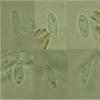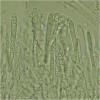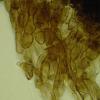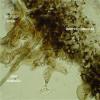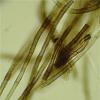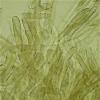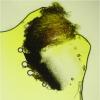
20-12-2025 23:08
Patrice TANCHAUDBonsoir, récolte sur sol sablonneux dans l'arri�

20-12-2025 15:47
Mirek GrycHi.These grew on pine wood that was heavily covere

18-12-2025 21:17
Pol DebaenstThe identification took me to Byssonectria deformi

15-12-2025 07:09
 Danny Newman
Danny Newman
indet. Rutstroemiaceae sp. on unk. fallen leavesMc

19-12-2025 10:10
Patrice TANCHAUDBonjour, récolte réalisée en milieu dunaire, a

18-12-2025 17:23
 Bruno Coué
Bruno Coué
Bonjour,je serais heureux d'avoir votre avis sur c

18-12-2025 18:07
Margot en Geert VullingsThese plumes were found on rotten wood.They strong

17-12-2025 18:35
 Michel Hairaud
Michel Hairaud
Bonjour à tous/Hi to everyone I am passing along
I think it could be Pyrenopeziza escharodes, but I have no security. What do you think?
The features are:
Apothecia size 500-700um
Asci biseriate, IKI +. croziers +. Size 50-58 x 5-6.5um
Paraphyses abundant vacuoles. Of 2-3.5um wide.
Spores fusiform, 9-11 x 2.5-3.5um
Reaction to KOH = intense yellow staining.
Excipulum medular angularis
Marginal hairs up to 120 x 6um, pigmented
Presence of a highly developed subiculum, thick-walled hyphae (x 4um)
Thanks in advance
greetings
Susana

did you rehydrate your fungus? It will widely open its apothecia (wait for some minutes while keeping them under water).
The refractive vacuoles in the paraphyses and their yellow reaction clearly assign this to Mollisia. The subicular hyphae are also very characteristic of the genus.
What kind of Rubus du you have, blackberries? I think it is Mollisia rosae, and I see that Aebi 1972 lists the species also for Rubus idaeus. That species has simple-septate asci, and I could imagine that in your case there are no croziers but only basal protuberances. If you manage to show more ascus bases we could get more clear.
M. prunicola would have croziers and longer spores, but I am unaware of hosts other than Prunus.
Zotto
I confused the name of the substrate. It was Rubus, but Rosa canina (very abundant in this area). So perfect with your identification.
Respect to croziers, surely you are right and also one case of protuberances on the base. Cost me find (I guess I wanted to see them).
thank you very much
Susana
?



